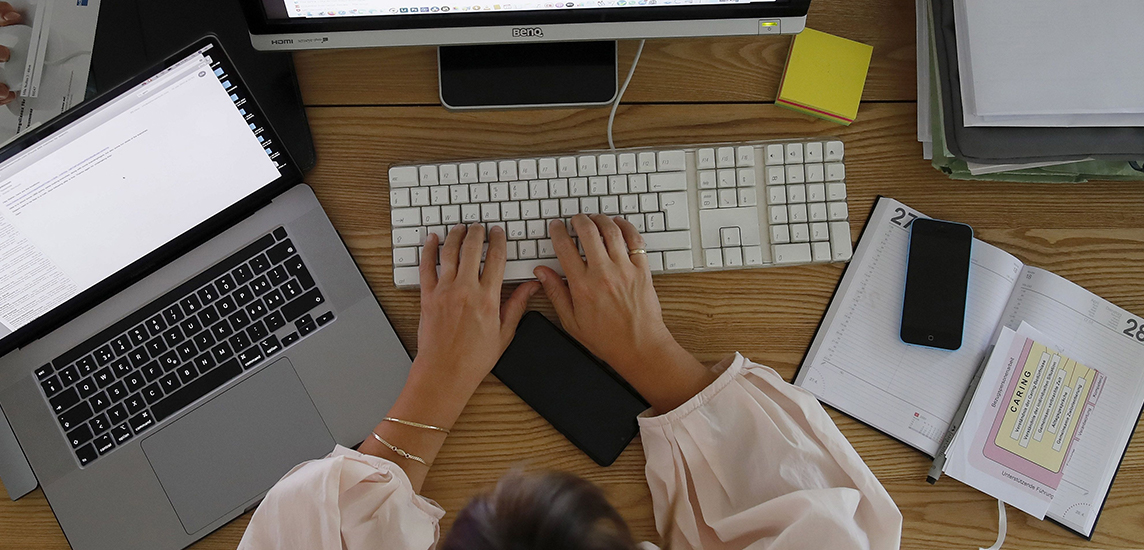WFH IN 2022: WHAT’S NEW & WHAT’S OBSOLETE
When the pandemic first hit, countries went into lockdown and businesses were forced to transform their workforce into one that would operate digitally and from the safety of their homes.
In EY’s COVID-19: Business Impact survey in 2020, it found that the Malaysian workforce had to adapt despite facing connectivity, tools and HR policy challenges.
Over two-thirds of companies (69%) in the survey faced disruptions in one form or another. Many of us assumed that 2021 would see the pandemic de-escalate as we revert to normalcy. However, as we make our way to 2022, it’s clear that Work-from-home, or commonly known as “WFH”, is here to stay.
With a WFH arrangement being more popular, it only increases the need for better and faster technology to ensure optimum productivity. Companies that made the necessary changes at the start of the pandemic could easily adapt and resume.
When the pandemic first hit, countries went into lockdown and businesses were forced to transform their workforce into one that would operate digitally and from the safety of their homes.
In EY’s COVID-19: Business Impact survey in 2020, it found that the Malaysian workforce had to adapt despite facing connectivity, tools and HR policy challenges.
Over two-thirds of companies (69%) in the survey faced disruptions in one form or another. Many of us assumed that 2021 would see the pandemic de-escalate as we revert to normalcy. However, as we make our way to 2022, it’s clear that Work-from-home, or commonly known as “WFH”, is here to stay.
With a WFH arrangement being more popular, it only increases the need for better and faster technology to ensure optimum productivity. Companies that made the necessary changes at the start of the pandemic could easily adapt and resume.


Employees and employers are beginning to see that WFH can give a renewed take on professional and personal development, while discarding unnecessary stress such as the daily commute to work.
WHAT WFH IN 2020/2021 LOOKED LIKE
As we make our way to 2022, we can now look back at the past two years to review some of the things we’re able to leave behind to work better and more efficiently. For a start, we have dropped traditional face-to-face communication as we can now jump onto Zoom calls as if it is our second nature.
While some still struggle, we’re generally less reliant on pre-COVID or legacy processes and tools as we adapt to newer and more innovative ways to collaborate despite working apart.
These two years saw a decline in sales and pitch meetings as potential leads held out for pre-COVID normality. There have also been fewer company town halls, events, and promotions.
On top of that, businesses saw a shift from heavily centralised to a distributed workforce. As teams tried to navigate through these unchartered waters, many internal meetings were also conducted as employees were constantly touching base on statuses and collaboration updates. Along with this, teams struggled to work with on-site asset management as they were all located miles apart.


OUR 2022 WFH PREDICTIONS
We’re optimistic that 2022 will see vast improvements to the current working experience. With herd immunity hopefully being established by then, we can look forward to an increase in sales or pitch meetings as leads get more comfortable and forecasting becomes easier to project. To that, we’ll see an uptick on sales, marketing, and promotional activities.
With an even more decentralised workforce, we’ll likely still see more virtual gatherings happening as teams continue bonding while working apart. On the operational end, by 2022 we’ll have more streamlined processes and events, therein creating the need for fewer internal meetings.
As new processes and tools no longer “feel” new, there will be scaled-up implementation of cloud-based platforms. In turn, this will create better and more optimised office and hybrid workplace asset management too.
As we progress further, we also foresee more wholesome workspaces as companies begin to empower their employees and provide a more inclusive and diverse workforce. With this also comes more flexible work hours as employees can better balance work and life. With an even more digitised workplace, it’s important for employers to ramp up their cybersecurity to defend and to detect and protect against imminent cyber threats.
We predict an uptick in better cameras and even more creative virtual backgrounds, as both employers and employees enhance their virtual working experience.
OUR 2022 WFH PREDICTIONS
There are many things to learn from this, but the three main insights are:
1. WFH is the new normal, and it’s unlikely for businesses to revert to their old ways of working solely from the office. Since we’re in this for the long haul, make relevant adjustments in every aspect, ranging from technology to HR, work operations to culture.
2. The right technology investments will let your businesses continue and thrive. Therefore, it’s more important now than ever to update your technology. Run a spring-cleaning session, get rid of technical baggage to modernise and stay competitive in your industry. Invest in technology that can help propel your business, and at the same time, refresh your team’s devices and IT infrastructure to drive productivity.
3. Don’t forget to lock the doors. As you make the shift towards an even more digital future, it’s equally important to be wary of looming cyber threats. Be sure to secure your network at every phase and across all IT assets. When it comes to network security, there is no such thing as being too safe.
If you’d like to know more about how you can digitise or mobilise your devices easily and safely, feel free to talk to us for more information.

